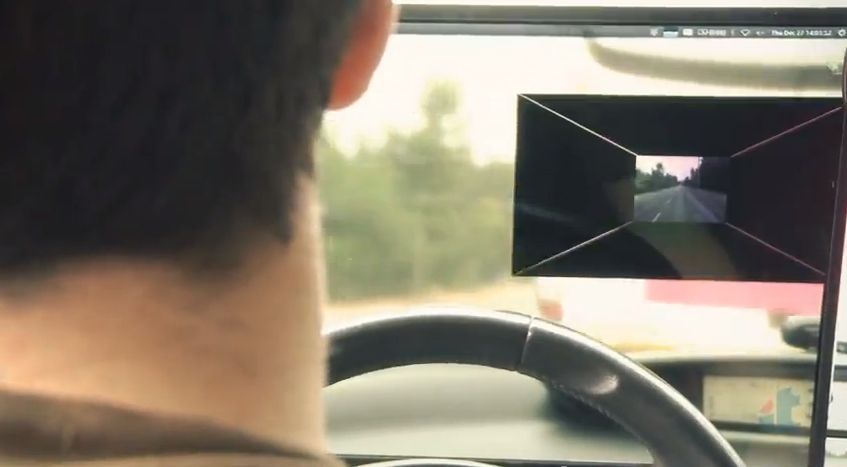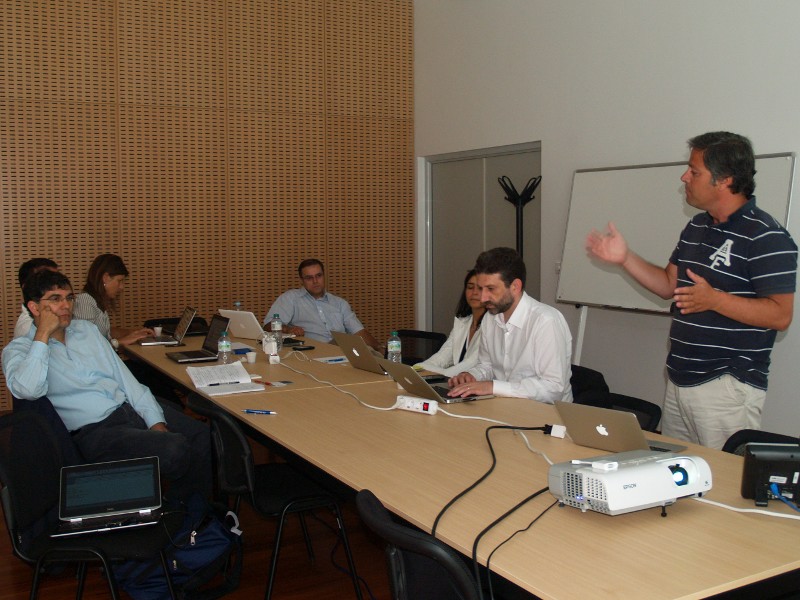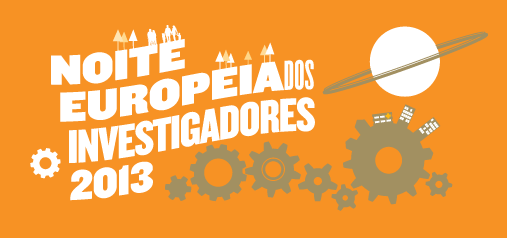Alumni
 |
Inês Oliveira is an alumna of the dual degree Professional Masters in Information Networking (MSIN), taught by the Universidade de Aveiro (UA) and Carnegie Mellon University (CMU), in the scope of the CMU Portugal Program. Inês finished her studies in 2008, but she still remembers the hard work with tight schedules and numerous projects, which helped her to “learn beyond technology.” |
When Inês Oliveira returned to PT Inovação, after her studies, she assumed a different role from the one she had held previously. “I was responsible for establishing the bridge between the technical and commercial fields and later became the manager of a network architecture project,” she explained. For the past two years, she has been responsible for coordinating innovation management transversely at PT Inovação. The experience that she obtained as an MSIN graduate taught her “the fundamental principles of global competitiveness and technological change in the 21st century.” Currently, Inês is deeply involved in a new crowdsourcing portal called JUMPin, which aims at involving students in solving real challenges faced by Portugal Telecom.
CMU Portugal: How was your experience as an MSIN dual degree graduate?
Inês Oliveira (IO): My experience as an MSIN dual degree graduate was one to carry for life. Until today I remember two challenges: going back to school (I had been working for a couple of years when I joined the Master) and keeping up with the pace demanded by the program. From then on I realized that when one sets one’s mind to move forward, there’s no turning back, and the possibilities are endless.
CMU Portugal: What were the hardest moments?
IO: Being a dual degree student, the classes that were lectured at Carnegie Mellon were followed through an audio and video system. Distance is not always easy, but the truth is that the hard work of all those involved contributed to diminish the side effects. Also, the program is very demanding. Schedules are tight, projects are numerous and time to sleep is short. In the end, we learned beyond technology. Pushing ourselves to the limit teaches about each other’s capacities, teamwork and self-organization. The feeling that prevails is that one is capable of everything.
“At Carnegie Mellon the cooperation between the University and companies creates a rich learning ecosystem.”
CMU Portugal: Can you identify your biggest learning experiences?
IO: From being at Pittsburgh one semester, and besides the personal experience, I keep in my mind two experiences that started as soon as the student reception: the proximity between the academic and corporate worlds and the INI family. At Carnegie Mellon the cooperation between the University and companies creates a rich learning ecosystem. It was an honor to be given the opportunity to feel and breathe such knowledge and to be around the professionals that allow this network to grow. Regarding INI, the message of the director, Dena Haritos Tsamitis was that we belonged to a family. Once an INI student, always an INI family member. This has proven to be true, and I am grateful to have met her and the rest of the department.
CMU Portugal: In what sense did this master help you to achieve the position you have today at PT Inovação?
IO: MSIN helped me in acquiring new competences and in solidifying the ones I had before. Besides the strong technological background, I was able to take courses such as Global Competitiveness: Firms, Nations, and Technological Change, Telecommunications Management, Transformational Leadership, Project Management, among others. When I came back to PT Inovação, I assumed a different role from the one I had previously. I was responsible for establishing the bridge between the technical and commercial fields and later became the manager of a network architecture project. In the past two years I was appointed to coordinate innovation management transversely at PT Inovação. I developed an interest in this topic with the Global Competitiveness course, which taught me the fundamental principles of global competitiveness and technological change in the 21st century.
CMU Portugal: You are currently involved in a new crowdsourcing portal called JUMPin, which aims at involving students in solving real challenges faced by Portugal Telecom. How did this idea emerge?
IO: JUMPin (www.jumpin.pt) is PT Inovação’s crowdsourcing portal. It presents challenges, which are real internal problems or needs framed within the company’s working technological domains. This portal is not just for students, although for the moment they have been our targets in terms of dissemination. It is for everyone who loves solving a problem, who likes to be challenged and who is willing to become part of a dynamic community. This has been the work of a team. The idea was developed within the innovation management department, the project management team carried out the project coordination, and its development was outsourced to Pictonio, a partner company.
“JUMPin (www.jumpin.pt) is PT Inovação’s crowdsourcing portal. (…) This is a step forward in our innovation pathway, enabling a future increase in the technological capabilities of the company through the connection with the creativity and knowledge of the surrounding ecosystem.”
CMU Portugal: What are the main goals of PT Inovação with JUMPin?
IO: With JUMPin, PT Inovação aims at accessing knowledge outside the company, because we are aware that such knowledge is by far larger than the one existing indoors. This is one step forward in our innovation pathway, allowing a future increase in the technological capabilities of the company through the connection with the creativity and knowledge of the surrounding ecosystem. PT Inovação is reaching out, through this portal, to new ways of thinking and creating, and to new opportunities to identify and attract new employees and partners. JUMPin provides an alternative channel where ideas and potential partnerships with PT Inovação can be proposed and have an individualized treatment.
CMU Portugal: What are the awards for the students that propose the best solutions?
IO: The challenges made available through JUMPin are to be solved by the community. Such challenges are based on internal problems and needs that can be addressed by people outside PT Inovação. The challenges are framed in the areas where the company operates. Each challenge will have a deadline for reply. Thereafter, PT Inovação will evaluate the proposals and select the winner, who will be awarded a prepaid card (Visa) with the value set for that specific challenge. But more than the monetary value, participants can show and be recognized for their skill through their participation in the proposed challenges.
October 2013
____________________
The dual degree Professional Masters in Information Networking, between Universidade de Aveiro (UA) and Carnegie Mellon University (CMU), is no longer available.
_________
If you are alumn of the dual degree Professional Masters or Doctoral Programs of the Carnegie Mellon Portugal Program, funded by the Portuguese Fundação para a Ciência e a Tecnologia, please let us know about your achievements. Send us an email to news@cmuportugal.org.

















